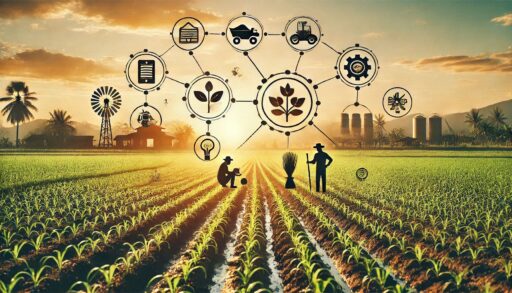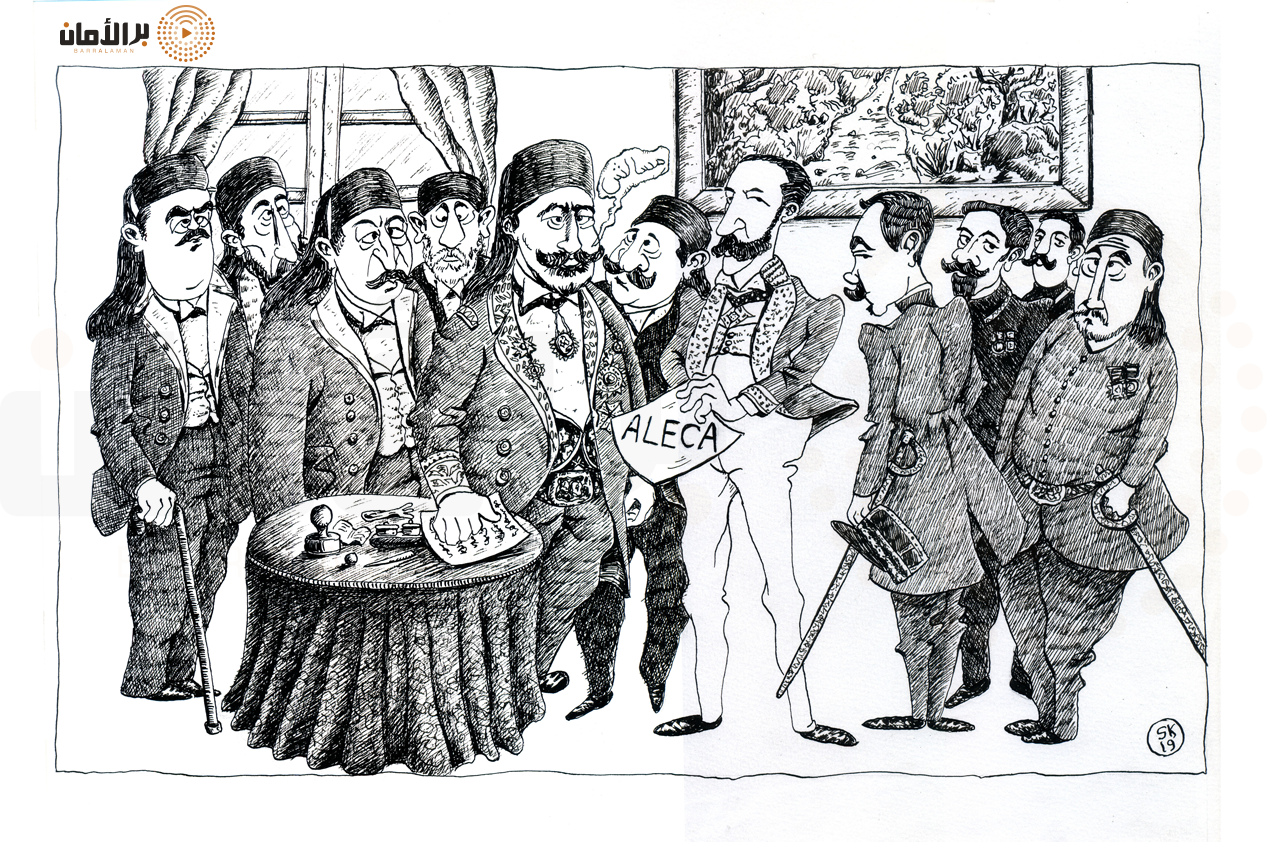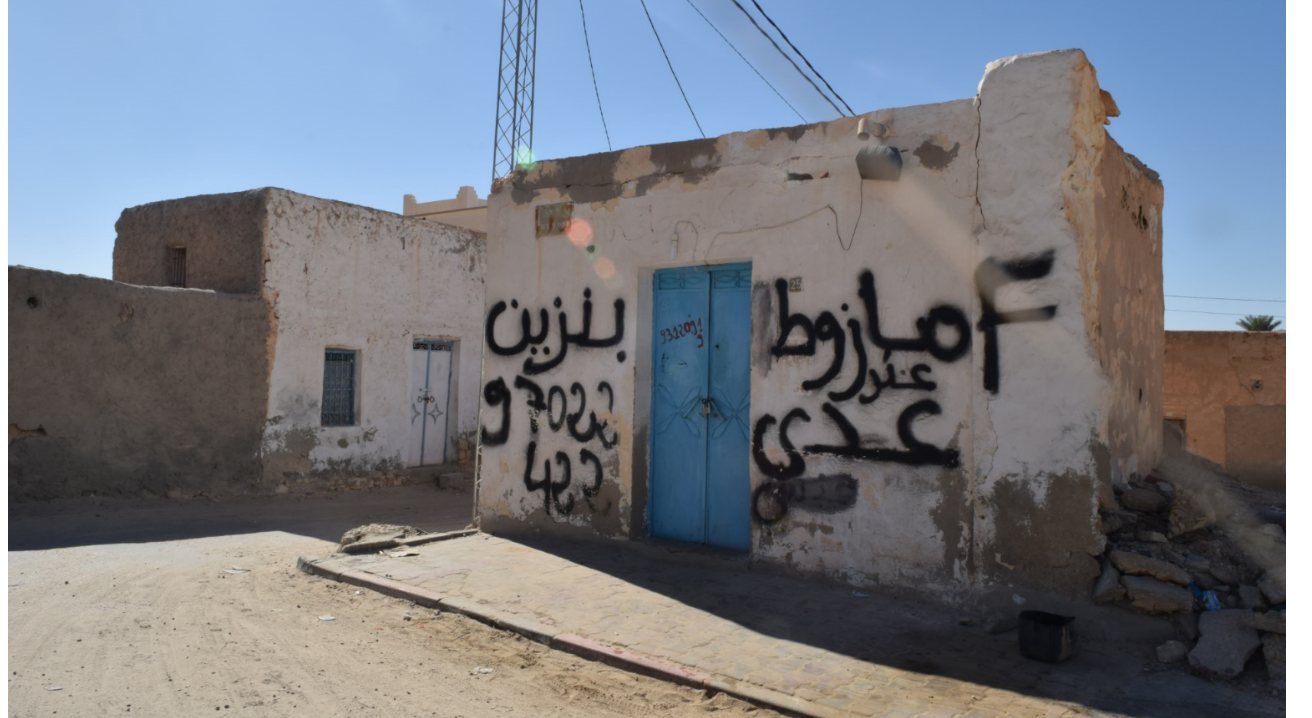Contents
Tunisia’s push for agricultural modernization, has delivered short-term productivity gains but at significant social and environmental costs. Small-scale farmers have been marginalized, traditional practices eroded, and ecological sustainability threatened. This article explores the consequences of Tunisia’s modernization journey, the gaps in agricultural policy and data systems, and the importance of empowering local farmers to achieve sustainable and equitable development.
The Cost of Modernization: Tunisia’s Agricultural Evolution and Its Unintended Consequences
Since gaining independence in the mid-1950s, Tunisia’s agricultural development has been deeply influenced by a modernization ideology modeled on the experiences of Western Europe and North America. Spearheaded by the Neo Destour party—later the Destourian Socialist Party in the 1960s—this approach relied heavily on foreign expertise and international intervention, particularly in agriculture. The underlying belief was that modern science and technology could resolve socio-economic challenges such as food insecurity, unemployment, and rural poverty. This trend was epitomized by the adoption of Green Revolution practices during the 1967–1968 season—a technocratic attempt to resolve socio-political challenges [1].
A prominent example of this approach was the introduction of enhanced Mexican soft wheat seeds, developed by the International Maize and Wheat Improvement Center (CIMMYT). While these seeds increased yields compared to local varieties, they came at significant costs. Their cultivation required the intensive use of chemical fertilizers and pesticides, as well as advanced machinery, creating dependencies on international supply chains. This shift disrupted local biodiversity, eroded indigenous farming practices [2], and undermined long-term sustainability.
The agricultural sector in Tunisia has experienced a significant decline in its contribution to the national economy over the decades. In the early 1960s, agriculture accounted for over 20% of Tunisia’s Gross Domestic Product (GDP) but fell to approximately 10% by 2018 [3]. This decline is mirrored in employment figures, while the sector once employed nearly 40% of the workforce in the years following independence, it now accounts for only 15% of total employment [4].
This decline aligns with Tunisia’s shift toward liberal economic policies in the 1970s, which prioritized export-oriented growth. The situation worsened with the implementation of structural adjustment programs (SAPs) in the mid-1980s and the signing of the free trade agreement with the European Union in 1995 [5]. The agricultural structural adjustment program promoted the liberalization of prices and investments and facilitated the gradual privatization of state-owned enterprises within the sector. While these reforms aimed to modernize the economy and attract foreign investment, they often did so at the expense of small-scale farmers and rural communities, who faced mounting challenges in a rapidly changing economic landscape. This policy shift has deepened inequalities, weakened local agricultural resilience, and marginalized those who depend on agriculture for their livelihoods. Despite this reduction in economic contribution, agriculture remains crucial for rural livelihoods, supporting around 470,000 farmers [6]. These farmers play a vital role in maintaining rural stability and food security within the country.
Despite 62% of Tunisia’s land being allocated for agricultural use, the sector struggles to meet domestic nutritional needs. The country has become increasingly reliant on imports for cereals, cattle fodder, and agricultural inputs like seeds, chemicals, and machinery. This reliance raises concerns about food security and Tunisia’s economic sovereignty.
The emphasis on short-term productivity gains, driven by international market incentives, has resulted in significant ecological degradation and exacerbated social inequalities. Approximately 80% of Tunisia’s available water resources [7] are used for irrigation [8], leading to severe over-exploitation. Combined with soil depletion and the excessive use of chemical fertilizers and pesticides, this has caused widespread environmental damage that jeopardizes the long-term sustainability of the country’s agricultural practices.
A major shortcoming of Tunisia’s modernization strategy is the persistent disconnect between agricultural policies and the realities faced by farmers on the ground. This gap has exacerbated the marginalization of small-scale farmers, who are increasingly burdened by the state’s retreat from its regulatory role and the growing dominance of large corporations in the agricultural market [9]. Access to credit [10] remains another critical barrier, as studies on credit market access and profitability in Tunisian agriculture reveal that many rural farmers struggle to obtain the financial resources necessary to modernize their operations. Consequently, a significant portion of the farming population remains underserved by formal financial institutions.
Compounding these challenges is the neglect of local farmers’ expertise and traditional agricultural practices, which are often overlooked in favor of external, top-down approaches. This disregard further weakens the relevance and effectiveness of agricultural policies, leaving small-scale farmers without the necessary support to overcome systemic obstacles and adapt to a rapidly changing economic landscape.
Bridging the Gap: The Role of Data in Shaping Tunisia’s Agricultural Policies
Agricultural policies rely heavily on data produced by national and international institutions, highlighting the need for a robust and reliable data ecosystem to design, evaluate, and refine strategies effectively. Yet, statistics are not neutral; it often mirror the priorities and assumptions of the entities funding and overseeing these systems. This bias tends to prioritize economic growth over social and ecological sustainability, emphasizing macro-level trends while overlooking the realities of small-scale farmers and traditional agricultural practices.
Tunisia’s agricultural data ecosystem is centered on two primary institutions: the National Institute of Statistics (INS) and the National Observatory of Agriculture (ONAGRI). Although these institutions provide extensive insights into macroeconomic trends, they fail to fully capture the nuanced and diverse realities faced by local agricultural practitioners.
The National Institute of Statistics (INS), established in 1969 under the Ministry of Development and International Cooperation, serves as Tunisia’s primary statistical authority. It plays a pivotal role in producing critical data on agricultural land use, the number of farms, and crop production. For instance, in 2023, Tunisia recorded approximately 515,548 agricultural holdings spanning a total area of 10,452,740 hectares. Despite its essential function, the INS faces significant challenges, particularly its reliance on foreign funding and technical assistance. A recent example is the 2023 agreement with the Italian Agency for Development Cooperation (AICS) and the World Bank, financed through the “Tunisia Economic Resilience and Inclusion Umbrella Fund.” This collaboration aims to modernize Tunisia’s statistical infrastructure by delivering enhanced and sustained technical support to attract greater investment in key sectors. According to a press release from AICS, the funding aims to “modernize Tunisia’s statistical apparatus” by providing “enhanced and continuous technical assistance” to attract greater investment, particularly in “priority sectors.” The Italian ambassador highlighted that this agreement reflects his country’s commitment to supporting Tunisia’s modernization efforts through a “pragmatic and comprehensive approach that meets the country’s real needs”. Meanwhile, both the director of AICS and the World Bank’s resident representative emphasized the critical role of modernizing Tunisia’s statistical system in achieving sustainable development and inclusive economic growth. Notably, the press release did not specify whether a representative of the INS had spoken at the signing ceremony.
The National Observatory of Agriculture (ONAGRI), operating under the Ministry of Agriculture, focuses on the agricultural and fisheries sectors, collecting and analyzing data across domains such as cereals, livestock, fisheries, and olive oil. While its insights primarily serve policymakers, investors, and researchers, ONAGRI’s data often skews toward export-oriented and market-driven sectors. This reflects an ideology centered on food security and international market incentives but frequently overlooks the needs of small-scale farmers and the importance of local self-sufficiency.
Following Tunisia’s political transition in 2011 and its subsequent entry into the Open Government Partnership [11], significant steps [12] were taken to improve data collection and transparency. Among these was the adoption of Law No. 22 of 2016, which led to the creation of the Access to Information Authority. Despite these advances, the agricultural data ecosystem continues to struggle with structural and accessibility challenges [13][14] that hinder its effectiveness. The centralized nature of Tunisia’s administration exacerbates regional inequalities, leaving rural and remote areas marginalized in terms of data access. Furthermore, the complex and time-consuming procedures required to obtain information often exclude key stakeholders, particularly small-scale farmers, who are typically unfamiliar with bureaucratic systems.
These challenges are compounded by reduced state funding and austerity measures imposed by the IMF, which have severely impacted the activities of institutions like the Agricultural Extension and Training Agency (AVFA). Historically, AVFA played a crucial role in supporting farmers through regular field visits, distributing informational materials, and organizing community events to share knowledge and innovations. However, today, this direct engagement has dwindled, leaving farmers frustrated by the lack of support and access to critical information.
This growing disconnect between agricultural institutions and the needs of the communities they are meant to serve highlights the pressing need for a more inclusive and locally-informed data ecosystem. While the modernization of Tunisia’s agricultural data ecosystem—promoted by international institutions—remains crucial for improving data collection, access, and processing, the manner in which this modernization is implemented raises concerns. The funding agreements that enable these initiatives often come with conditions and priorities shaped by donors, which do not necessarily align with the interests of fostering equitable and inclusive agriculture in Tunisia. This disconnect risks reinforcing existing inequalities in the agricultural sector, where rural communities are already marginalized in terms of resources.
Modernization must not simply be a technocratic exercise driven by external priorities but a process that empowers small-scale farmers, incorporates local knowledge, empowering rural communities, and building resilience in the face of Tunisia’s broader economic and ecological constraints.
Towards a More Inclusive Agricultural Data Ecosystem
To address these challenges and build a more inclusive agricultural data system, Tunisia must:
- Decentralize Data Collection and Analysis: Empower regional and local actors to contribute to the data ecosystem, ensuring it reflects the diverse realities of rural communities and small-scale farmers.
- Prioritize Local Needs: Shift the focus from export-oriented policies to supporting sustainable, small-scale farming and local food systems.
- Engage Farmers and Agricultural Practitioners: Actively involve farmers in data collection, policy development, and decision-making processes to ensure policies are grounded in real-world experiences and challenges.
- Enhance Accessibility and Transparency: Simplify bureaucratic procedures to make data more accessible to all stakeholders, particularly small-scale farmers and marginalized communities.
By addressing these gaps, Tunisia can create a more balanced and inclusive agricultural policy framework that supports economic growth while safeguarding social equity, environmental sustainability, and national sovereignty. This approach will not only enhance policy effectiveness but also restore trust between agricultural institutions and the communities they serve.
—
References
[1] Cornilleau, L., and P. Joly. “La Révolution Verte, Un Instrument de Gouvernement de La « faim Dans Le Monde ». Une Histoire de La Recherche Agricole Internationale.” Le Gouvernement Des Technosciences: Gouverner Le Progrès et Ses Dégâts Depuis 1945, Dominique Pestré, La découverte, 2014, pp. 171–201.
[2] Ajl, M., & Sharma, D. (2023). The Green Revolution and transversal countermovements: Recovering alternative agronomic imaginaries in Tunisia and India. Canadian Journal of Development Studies / Revue Canadienne d’études Du Développement, 43(3), 418–438. https://doi.org/10.1080/02255189.2022.2052028
[3] World Bank Data, Tunisia: https://data.worldbank.org/country/TN
[4] « Emplois par secteur économique en Tunisie 2008 – 2018 [archive] », sur fr.statista.com
[5] Mohamed Salah Bachta et Anouar Ben Mimoun, « Libéralisation des échanges, agriculture et environnement en Tunisie », Options Méditerranéennes, no 52, 2003
[6] Ministère de l’Agriculture des and Ressources Hydrauliques et de la Pêche. 2021. Projet Annuel de Performance de La Mission Agriculture, Ressources Hydrauliques et Pêche Pour l’année 2022. Ministère de l’Agriculture des Ressources Hydrauliques et de la Pêche. http://www.gbo.tn/sites/default/files/2022-01/PAP%202022%20Agriculture.pdf.
[7] “Tunisia | Water Efficiency, Productivity and Sustainability in the NENA Regions (WEPS-NENA) | Food and Agriculture Organization of the United Nations.” https://www.fao.org/in-action/water-efficiency-nena/countries/tunisia/en/
[8] “Water Use in Tunisia.” Fanack Water. https://water.fanack.com/tunisia/water-use-tunisia/
[9] Gasmi, Haithem, and Roxanne Dovdar. من أجل نظام فلاحي وغذائي صامد ومستدام وشامل. Consultation, AFSA, June 2021, https://drive.google.com/file/d/16lQNI6_-EMxopALzE-CNubseeN_Tpapu/view?usp=drive_link.
[10] Foltz, Jeremy D. 2004. “Credit Market Access and Profitability in Tunisian Agriculture.” Agricultural Economics 30(3): 229–40. doi:10.1016/j.agecon.2002.12.003.
[11] Mohamed Salah Bachta et Anouar Ben Mimoun, « Libéralisation des échanges, agriculture et environnement en Tunisie », Options Méditerranéennes, no 52, 2003
[12] Ministère de l’Agriculture des and Ressources Hydrauliques et de la Pêche. 2021. Projet Annuel de Performance de La Mission Agriculture, Ressources Hydrauliques et Pêche Pour l’année 2022. Ministère de l’Agriculture des Ressources Hydrauliques et de la Pêche. http://www.gbo.tn/sites/default/files/2022-01/PAP%202022%20Agriculture.pdf.
[13] “Tunisia | Water Efficiency, Productivity and Sustainability in the NENA Regions (WEPS-NENA) | Food and Agriculture Organization of the United Nations.” https://www.fao.org/in-action/water-efficiency-nena/countries/tunisia/en/
[14] “Water Use in Tunisia.” Fanack Water. https://water.fanack.com/tunisia/water-use-tunisia/







